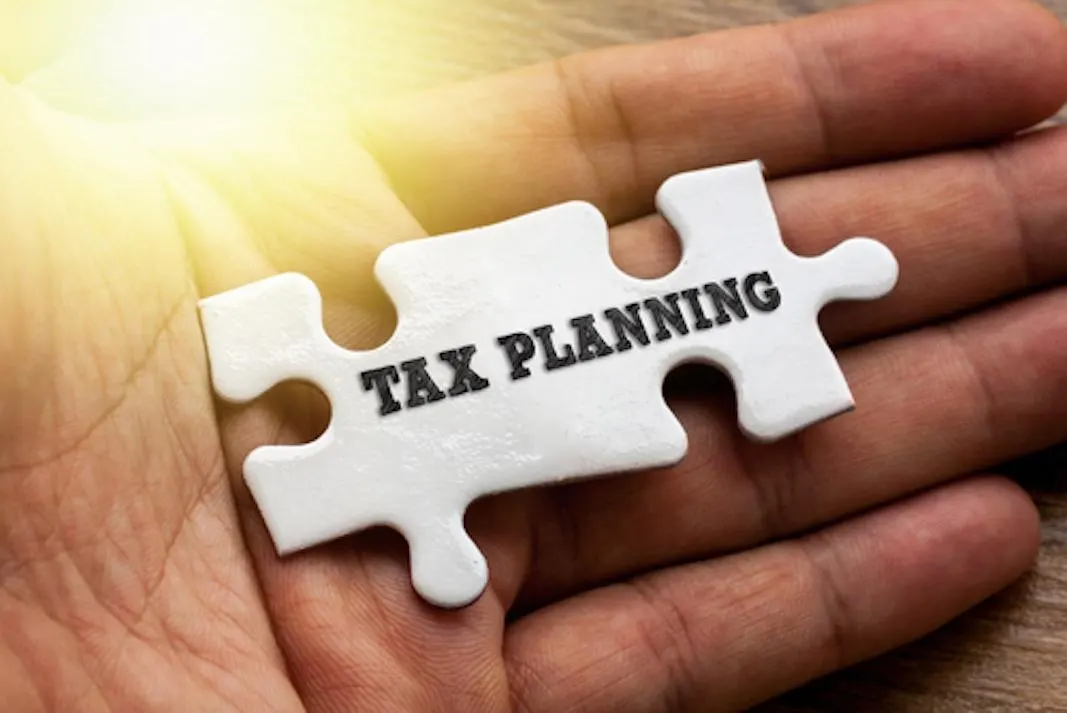Copyright Forbes

Get ready for year-end with proactive tax planning for traders. The One Big Beautiful Bill Act (OBBBA) made many TCJA provisions permanent and extended valuable deductions for traders. Smart timing of income, PTET/SALT payments, and S-Corp benefits before December 31 can lower your 2025 tax bill and set you up for success in 2026. Overview Introductory Note on Financial Product Tax Treatment Every trader should understand how different financial instruments are taxed. Securities, futures, options, ETFs, ETNs, forex, digital assets, precious metals, and commodities are all subject to different tax treatments. This post includes a complete reference section later in the article detailing those distinctions. Overview Year-end is the best time for active traders to take control of their 2025 tax outcome. With significant changes under the One Big Beautiful Bill Act (OBBBA), signed July 4, 2025, traders can capitalize on lower tax rates, wider brackets, and enhanced deductions made permanent from the 2017 Tax Cuts and Jobs Act (TCJA). Whether you’re using Trader Tax Status (TTS), the Section 475 mark-to-market (MTM) election, or traditional capital-gain treatment, proactive steps before December 31 can save thousands in taxes. 1. OBBBA Made TCJA Benefits Permanent Note: 2025 thresholds verified under OBBBA; cross‑checked with multiple trusted tax publishers to ensure accuracy, as IRS pages may remain outdated. Lower tax brackets preserved: The top individual rate remains 37%, avoiding the scheduled rise to 39.6%. Marriage penalty relief is available across most brackets. Higher standard deduction: $15,750 single / MFS, $31,500 MFJ, and $23,625 HOH for 2025 (filed in 2026). Qualified Business Income (QBI) deduction retained: Section 199A continues for traders with TTS and Section 475 income, subject to thresholds. $40,000 SALT deduction cap: Extended for 2025 (with 1% annual indexing through 2029). 100% bonus depreciation: Permanently reinstated for qualifying assets placed in service after January 19, 2025. Section 174A – Internal-Use Software Expensing: Domestic R&E expenses, including internal-use software, are fully deductible in the year incurred. These provisions give traders and their pass-through entities a stable planning framework for years ahead. MORE FOR YOU 2. The SALT Cap and PTET Strategy Still Matter The $40,000 SALT cap doesn’t eliminate the advantage of Pass-Through Entity Tax (PTET) elections. PTET allows partnerships and S-corps to pay state tax at the entity level, making it fully deductible against business income for federal purposes—bypassing the SALT cap. Action items: Confirm or elect PTET before your state’s deadline. Pay 2025 PTET installments by year-end to secure the deduction. Coordinate your PTET with your QBI deduction and NIIT exposure to maximize overall benefit. 3. Capital Gains and Loss Harvesting Still Work “Selling losers to offset winners” remains a core year-end move. For active traders without Sections 475 or 1256 (futures): Harvest losses to offset realized capital gains. Use up to $3,000 of net capital loss to offset ordinary income. Match long-term losses against short-term gains—taxed up to 37% plus 3.8% NIIT. For Section 475 securities traders, wash-sale and capital-loss limitations are eliminated; ordinary losses can now offset all sources of income. Investors must still comply with wash-sale rules under Section 1091, which disallow losses when substantially identical securities are repurchased within 30 days before or after the sale. 4. Avoid the Wash-Sale Trap Under Section 1091, no loss is recognized if you reacquire substantially identical stock or securities within 30 days before or after the date of sale. This can occur across multiple brokerages or even IRAs. (IRA accounts on their own do not have wash sales.) Warning: It’s a problem when you repurchase a losing trade from a taxable account in an IRA. That causes a permanent loss of the wash sale, whereas in taxable accounts, wash sales are merely deferred. The IRS wash sale rules for brokerage firms are narrower and differ from the IRS rules for taxpayers, which are broader. Brokers report wash sales for each account based on identical securities. Conversely, taxpayers should report wash sales on all accounts on a combined basis, as well as on substantially identical securities. For year-end planning, consider using TradeLog to comply with the IRS wash sale rules for taxpayers. Trader tips: Close losing positions by mid-December to ensure 2025 loss recognition, and wait for the rest of the 30 days in January 2026 before repurchasing a substantially identical security. (“Break the chain” strategy.) Turn off DRIPs before year-end. Replace exposure with similar but not identical ETFs (e.g., sell SPY, buy SPLG). Each ETF has S&P 500 exposure, but they are not substantially identical. Section 475 traders are exempt from wash sales. 5. Timing Income and Deductions Under OBBBA Defer income to 2026 if possible—through timing of C-corp dividends, bonuses, or realized gains. (Partnership and S-corp distributions are generally non-taxable and don’t defer income.) Accelerate losses and deductions into 2025 if you expect income to drop in 2026, capturing current-year savings while rates remain constant. Bunch charitable or state-tax payments to exceed the higher standard deduction in alternating years, and itemize deductions. (The new above-the-line charitable deduction doesn’t apply until the 2026 tax returns.) 6. Section 475 and Trader Tax Status: Positioning for 2025 and Beyond Although the Section 475(f) election for 2026 is filed with your 2025 return or extension (April 15, 2026, for individuals, March 15, 2026, for partnerships/S-corps), Q4 2025 is the time to evaluate your Trader Tax Status (TTS) and decide how Section 475 fits into your broader plan. Consider using Green’s Trader Tax Status Qualification App Why This Matters at Year-End Under 475, all trading gains and losses become ordinary, eliminating the $3,000 capital-loss limit and wash-sale deferrals. Staying under capital-gain treatment allows for loss harvesting and preferential long-term rates. Once elected, 475 applies only while TTS is active; if TTS lapses, the mark-to-market method is suspended for the non-TTS period. Assessing TTS Eligibility Before Year-End TTS qualification determines whether you can deduct trading business expenses and apply Section 475 for 2025 (if you previously elected Section 475 on time). If you cease active trading before year-end—for example, TTS stops after Q3—then Section 475 is suspended for Q4 2025, and trading after that point reverts to capital-gain treatment. Maintain a consistent trading cadence through Q4 to preserve TTS for the entire year and keep Section 475 in effect without interruption. If a trader wants to form a new entity for TTS and tax benefits, they should have created it before the start of Q4. Establishing an entity for only one quarter of the year is generally not enough time to safely demonstrate TTS eligibility or fully utilize related deductions and benefits. Segregating Investments From Trading Traders eligible for TTS and using Section 475 can also maintain separate investment positions, subject to capital gains taxation. To preserve this distinction and comply with IRS rules: Use separate brokerage accounts for 475(f) trading vs. investments. Avoid holding the same or substantially identical securities in both accounts. If investments are held inside a 475 account, you must contemporaneously record each investment in your records on the day of purchase (e.g., in a trade log or journal). Without this same-day identification, the IRS may treat the position as a 475 trading position or bar a loss from using the 475 method. Do not reclassify losing investments as trading positions later—a TTS trader cannot convert a losing investment position into a trading position to turn an unrealized capital loss into an ordinary loss. Such retroactive relabeling violates Section 475 and can trigger IRS adjustments and penalties. Maintain documentation that demonstrates investment intent, more extended holding periods, and a reduced frequency of trading. Report trading under Form 4797 and investments on Form 8949 / Schedule D. This segregation ensures you retain the benefits of both worlds—ordinary-loss treatment for trading (and QBI deduction on Section 475 income), and preferential capital-gains rates for long-term investments. Accelerating Expenses Under OBBBA If TTS is strong in 2025 but uncertain for 2026, consider accelerating business expenses into 2025 to secure full deductions while TTS clearly applies. The One Big Beautiful Bill Act (OBBBA) strengthened TCJA’s bonus depreciation rules, allowing 100% expensing for most business equipment, computers, furniture, and software placed in service by December 31, 2025. Other acceleration opportunities: Prepay subscriptions, education, and trading-related services within the 12-month rule. Upgrade trading workstations and technology before year-end to qualify for full expensing. Pay professional and advisory fees (such as tax consultations or accounting software) by December 31 for the 2025 deduction. 7. The QBI Deduction: Preserve It With an S-Corp The Section 199A Qualified Business Income (QBI) deduction continues after OBBBA and remains a valuable planning opportunity for traders with TTS who use the Section 475(f) method. The deduction equals up to 20% of qualified ordinary trading income, minus TTS expenses, and can lower the effective top rate from 37% to about 29.6% when applicable. Phaseout thresholds (2025): The OBBBA made the Section 199A QBI deduction permanent but left 2025 thresholds unchanged. For tax year 2025, the existing SSTB limits remain in effect: $197,300 (single and other) and $394,600 (MFJ), with phaseouts ending at $247,300 and $494,600, respectively. Beginning in 2026, the OBBBA significantly expands these ranges, increasing the phaseout window from $50,000 to $75,000 for single filers and from $100,000 to $150,000 for joint filers. The income thresholds themselves will adjust for inflation in 2026. The law also introduces a new minimum QBI deduction of $400 for taxpayers with at least $1,000 of QBI from an active business, indexed for inflation starting in 2027. Understanding QBI Mechanics for Traders Within the phaseout range, an SSTB like a TTS trading business may qualify for a partial deduction based on the lesser of: 20% of qualified business income (QBI), or The greater of 50% of W-2 wages, or 25% of W-2 wages plus 2.5% of the unadjusted basis (UBIA) of qualified property. Traders generally have little or no qualified property, so the 50% of W-2 wages test typically applies. A TTS S-Corp can pay the owner W-2 wages, unlocking health insurance and retirement plan deductions, as well as potentially supporting a limited QBI deduction within the phaseout range. Partnerships and sole proprietorships cannot pay the owner W-2 wages; however, they can include non-owner employee wages to satisfy the wage limitation test. Planning Notes Because trading is an SSTB, the QBI deduction phases out entirely once taxable income exceeds the upper threshold. For traders with taxable income inside the phaseout range, S-Corp wages can help optimize QBI benefits while preserving access to health insurance and retirement deductions. 8. Retirement and S-Corp-Level Planning TTS S-Corp entities offer valuable benefits, including Solo 401(k) and SEP IRA contributions, as well as health insurance deductions. Make elective deferrals by December 31 and employer contributions by the filing deadline. Ensure S-corp payroll meets the wage base for both retirement limits and QBI optimization. 2025 Retirement Contribution Limits Solo 401(k) elective deferral: $23,500 (employee contribution limit) Catch-up contribution (age 50+): $7,500 SECURE 2.0 catch-up (ages 60–63): $11,250 (if plan allows) Employer profit-sharing contribution: Up to 25% of W-2 wages, capped at $46,500. Total contribution limit: $70,000 ($77,500 including catch-up) S-Corp Advantage for Traders Earned income: S-Corp officer compensation qualifies as earned income, allowing for deductions for health insurance and retirement plans. Solo 401(k) deadlines: The plan must be established by December 31, 2025, with elective deferrals made by the end of the year. Employer contributions (profit sharing) are deductible through the S-Corp return due date, including extensions (generally September 15, 2026). SEP IRA option: Simplified alternative; 25% of compensation up to the same annual limits. No elective deferrals or catch-ups. The Solo 401(k) requires less salary, resulting in savings on payroll taxes. No “reasonable compensation” rule: A TTS S-Corp determines wages based on desired health insurance and retirement benefits, as well as QBI deductions in the phaseout range, rather than on general industry standards or the 25% to 50% of net income norm. For more details, see GreenTraderTax Retirement Solutions. 9. New OBBBA Temporary Provisions Affecting Individuals Temporary for tax years 2025 through 2028. For non-itemizers and itemizers. Senior Deduction $6,000/year single, $12,000 MFJ. Age 65 or older. Phases out (MAGI) over $75,000 single or $150,000 MFJ. Overtime Deduction capped at $12,500/ year single, $25,000 MFJ. Phases out (MAGI) over $150,000 single, or $300,000 MFJ. Car-Loan Interest Deduction up to $10,000. Phases out (MAGI) over $100,000 single, or $200,000 MFJ. Other OBBBA provisions are permanent. Permanent 60% AGI limit for cash charitable gifts. Estate & Gift exemption rises to $15 million in 2026—update estate plans. Pease Limitation repealed—itemized deductions less restricted for high earners. 10. Year-End Example: Active Trader Couple Scenario: Married TTS traders using an S-Corp, filing jointly $550K Section 475 income (ordinary) $50K long-term capital gains $20K unrealized losses Moves before December 31: Elect PTET for S-Corp → $35K state tax deduction from gross income, unlocking full standard deduction on individual tax return. Harvest (sell) $20K capital losses → offset against capital gains. Contribute the maximum allowed $70K Solo 401(k) through S-Corp. Health insurance deduction $25k through S-Corp. Pay $186K W-2 salary → to maximize Solo 401(k) and also qualify for partial QBI deduction within the phaseout range. Donate $10K cash → within 60% AGI limit. (Use standard deduction, which is higher) Calculations: Gross income = $580K (550k trading + 30k LTCG). Deduct 130k = PTET ($35K) from gross income, Solo 401(k) ($70K) AGI deduction, ($25k) health insurance AGI deduction, Adjusted gross income = $450K. Standard deduction ($31.5K) → taxable income ≈ $418.5K. This keeps taxable income within the QBI phaseout range (starts $394.6K, ends $494.6K MFJ for 2025), allowing a partial QBI deduction. Result: Taxable income reduced by ~$130K, enabling a limited QBI deduction, NIIT savings, and lower effective tax rate — demonstrating coordination of PTET, retirement, health, and capital loss harvesting. Payroll is the lever that counts, so find your sweet spot to unlock the most tax savings. 11. Final Checklist for December 31 Review YTD trading and investment gains/losses Harvest capital losses and avoid wash-sales Maximize state PTET through S-Corps and LLC/partnerships Maximize health insurance and retirement contributions through an S-Corp Execute S-corp payroll before the year-end Confirm TTS status through year-end Accelerate TTS expenses (100% expensing) Schedule 2025 tax consultation 12. Tax Treatment of Financial Products: Detailed Reference Every trader should understand how different financial instruments are taxed. Below is an expanded summary organized by the categories in the GreenTraderTax Tax Treatment Center and the “Explore Tax Treatment on Financial Products” section: Capital Loss Carryovers: Capital losses offset capital gains and up to $3,000 of ordinary income ($1,500 if married filing separately). Unused losses carry forward indefinitely. Section 475(f) traders report ordinary losses that do not absorb capital-loss carryovers. Securities: Stocks and narrow-based ETFs are subject to realization accounting, capital gains treatment, and wash-sale loss deferrals under Section 1091. Traders qualifying for TTS can elect Section 475(f) treatment for ordinary gain or loss, thereby avoiding wash sales and the $3,000 limitation. Report on Form 8949/Schedule D or Form 4797 if using Section 475. Section 1256 Contracts (Futures, Broad-Based Index Options): Receive 60% long-term and 40% short-term capital gains treatment, regardless of holding period. Section 1256 contracts are marked-to-market at year-end, and losses may be carried back three years against prior Section 1256 gains (as reported on Form 6781). Traders can also opt for a mixed straddle treatment. Options: Equity options are taxed as securities. Gains or losses are capital and depend on the holding period. Wash-sale rules apply to substantially identical options. Complex rules for straddles, constructive sales, and Section 1258 conversion transactions can defer losses or recharacterize gains. Options on futures are taxed the same as futures, which are Section 1256 contracts. Exchange-Traded Funds (ETFs): Most ETFs are registered investment companies (RICs) taxed as securities. Commodity or futures-based ETFs may issue K-1s with Section 1256 gains, but for sales, they are treated like securities. Grantor-trust metals ETFs (e.g., GLD, SLV) are taxed as collectibles (28% maximum rate). Forex: Spot and forward contracts default to Section 988 ordinary gain or loss treatment. Traders can elect out of Section 988 for specific contracts and into Section 1256(g) for capital-gains treatment, but elections must be made prospectively. Cryptocurrencies and Digital Assets: See Digital Asset Trading Explained: Tax Rules for Crypto ETFs, Futures, Options, and Tokens. Digital assets are treated as property for federal tax purposes, rather than as currency. Traders must report sales and exchanges as capital transactions. Short-term and long-term capital gains apply based on the holding period. Mining, staking, and airdrops generate ordinary income at the time of receipt. Crypto futures on regulated U.S. exchanges qualify as Section 1256 contracts (60% long-term / 40% short-term). Wash-sale rules currently do not apply to crypto but may under future legislation. ETFs and ETNs holding digital assets follow their fund structure—RIC, grantor trust, or partnership. Proper recordkeeping is essential: use software or blockchain explorers to track cost basis, proceeds, and holding periods accurately. Other Financial Products: This includes swaps, structured notes, CFDs, and foreign exchange derivatives. Most are subject to ordinary income treatment unless they qualify for capital gains under specific elections. See Other Instruments for detailed character and timing rules. Volatility exchange-traded notes (ETN) are structured as “prepaid forward contracts” or “debt instruments.” The IRS does not consider an ETN prepaid forward contract a security, whereas ETN debt instruments are. Sales of ETN prepaid forward contracts use the capital gains realization method on sales. Because it’s not a security, ETN prepaid forward contracts (i.e., VXX) are not subject to wash-sale loss adjustments or Section 475 (if elected). Short Selling: Short sales are not recognized until the position is closed. Gains are always short-term. Losses are also short-term, except in rare cases involving hedging or straddling. Shorting substantially identical securities may create constructive sales or defer losses. 13–26. Expanded Planning Topics 13. Excess Business Loss & NOL: $313k single / $626k MFJ thresholds; excess business losses (EBL) become NOL carryforwards with an 80% income offset limit in the subsequent years. 14. Defer vs. Accelerate: Match timing to expected 2026 income shifts. 15. Roth IRA conversions: Pair with Section 475 losses to use brackets efficiently. 16. 0% LTCG: 2025 thresholds $48,350 single / $96,700 MFJ / $64,750 HOH. 17. NIIT: 3.8% surtax above $200k single / $250k MFJ / $125k MFS. 18. Business expenses: 100% expensing; $2,500 de minimis; investment expense suspension continues. 19. Estimated taxes: Pay Q4 by January 15, 2026; consider adding to withholding at year-end to avoid underestimated tax penalties. Consider paying state estimated taxes before December 31, 2025, to take advantage of the new $40k SALT cap. However, keep an eye on AMT for which SALT is not deductible. 20. Wash-sale tactics: Use a new 2026 entity to reset positions, which breaks the chain on 2025 wash-sale losses. 21. TTS & Section 475 ops: Timely elections; mid-year suspension planning. If you have a significant capital loss carryover going into 2026, consider the pros and cons of making a 475 election. See chapter 2 of Green’s 2025 (or 2026) Trader Tax Guide for decision-making rationale. 22. S-Corp benefits: W-2 pay, accountable plans, health & Solo 401(k) integration, PTET SALT cap workaround, and QBI phaseout ranges. 23. New entity setup for 2026: Form single-member LLC in Dec 2025. On January 1, 2026, add your spouse as a partner in a partnership or elect S-Corp treatment for 2026. Elect Section 475 within 75 days of inception (January 1, 2026) by internal resolution for the LLC/partnership or S-Corp. “new taxpayer” exception. 24. Straddles: Avoid constructive sale/receipt traps. 25. Charitable: Donate appreciated stock; 60% AGI limit. 26. Disaster relief: Monitor IRS/state relief, including extended payments and tax returns, plus tax loss benefits. Conclusion OBBBA locks in a favorable tax environment for traders—but timing, TTS qualification, entity strategy, and QBI management still separate the merely compliant from the truly optimized. Before December 31, review your positions, confirm elections, and fine-tune income levels to maximize deductions and minimize your tax liability.



